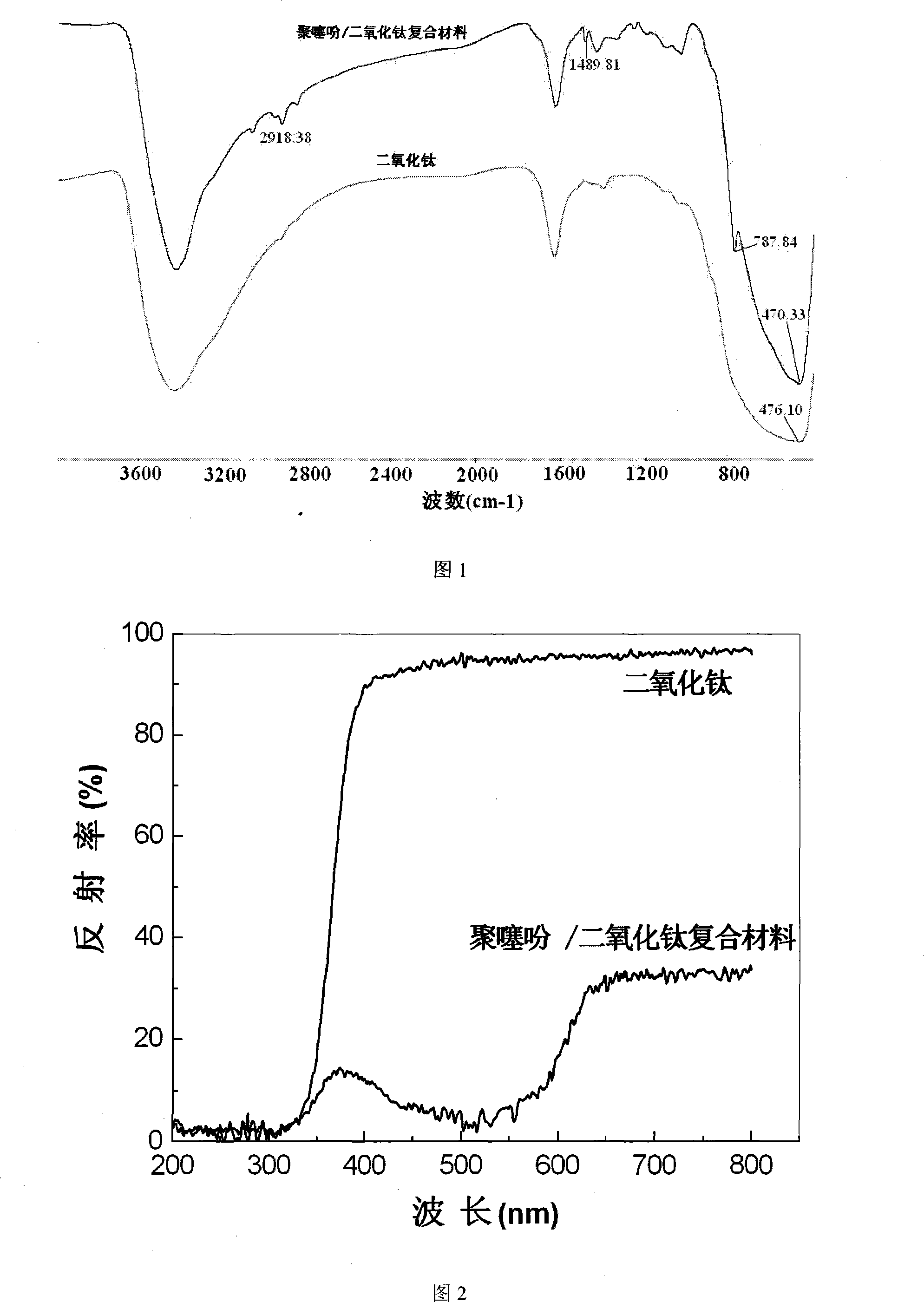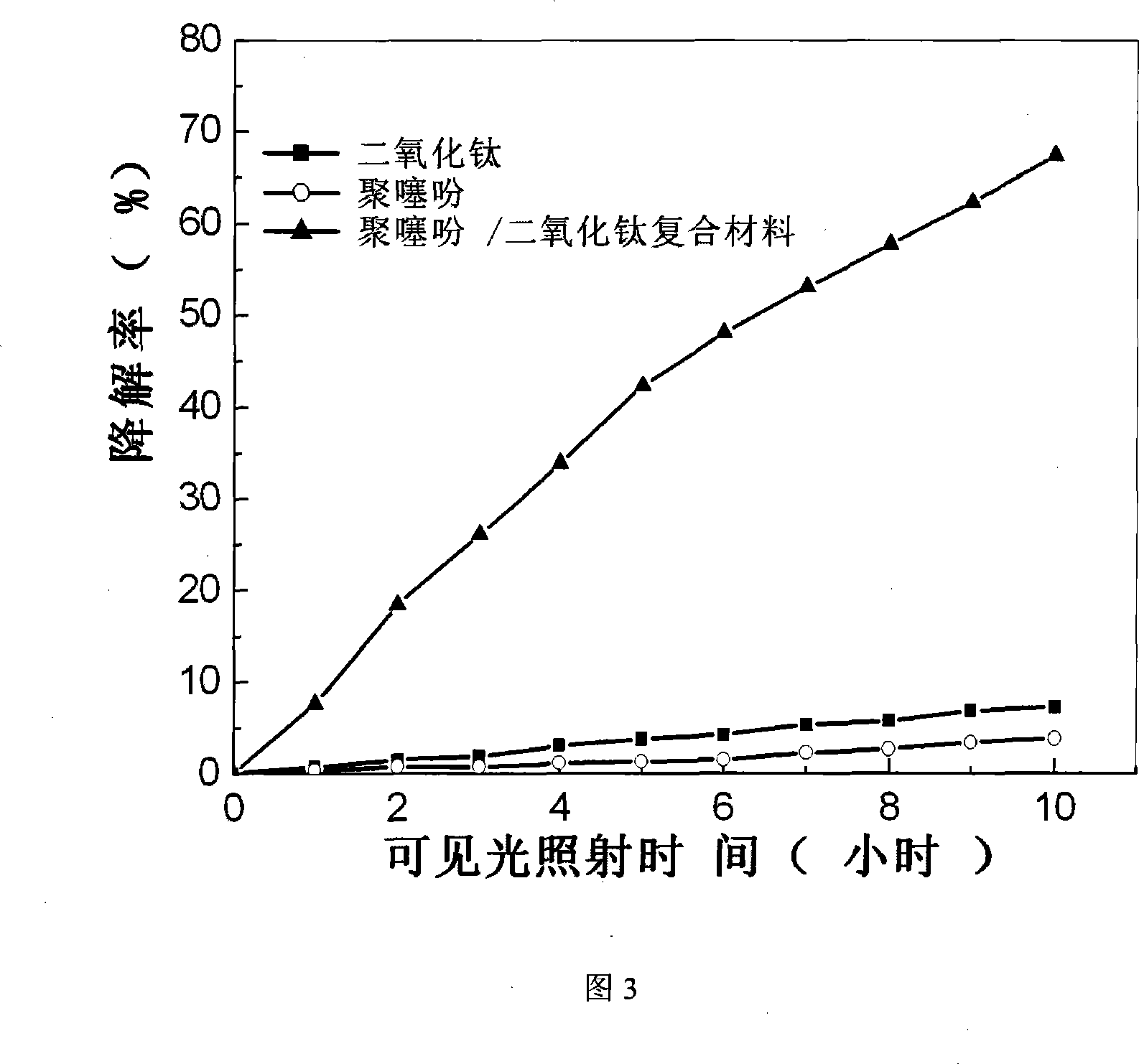Composite photo-catalytic material with visible light catalytic activity and preparation thereof
A technology of composite photocatalysis and photocatalytic activity, which is applied in the field of composite photocatalytic materials and their preparation, can solve problems such as poor dispersion, reduced photon efficiency, limited use range, etc., and achieves improved application range, simple preparation method, and improved utilization efficiency. Effect
- Summary
- Abstract
- Description
- Claims
- Application Information
AI Technical Summary
Problems solved by technology
Method used
Image
Examples
Embodiment 1
[0021] Add 2 parts of titanium dioxide particles dried at 120°C for 2 hours, and 50 parts of chloroform into a single-necked flask with a drying tube. After being fully dispersed by ultrasonic waves, add 0.03 parts of a conjugated polymer monomer, stir magnetically for 40 minutes, and then Add 1 part of anhydrous ferric chloride, react in ice bath for 6 hours, obtain a black solid product after filtration, wash with methanol until methanol is colorless, and then vacuum dry at room temperature to obtain a composite photocatalytic material with visible light catalytic activity .
Embodiment 2
[0023] Add 4 parts of titanium dioxide particles dried at 110°C for 3 hours, and 100 parts of chloroform into a single-necked flask with a drying tube. After being fully dispersed by ultrasonic waves, add 0.04 parts of a conjugated polymer monomer, stir magnetically for 60 minutes, and then Add 2 parts of anhydrous ferric chloride, react in an ice bath for 8 hours, obtain a black solid product after filtration, wash with methanol until the methanol is colorless, and then vacuum-dry at room temperature to obtain a composite photocatalytic material with visible light catalytic activity .
Embodiment 3
[0025] Add 8 parts of titanium dioxide particles dried at 100°C for 5 hours, and 200 parts of chloroform into a single-necked flask with a drying tube. After being fully dispersed by ultrasonic waves, add 0.02 parts of conjugated polymer monomers, stir magnetically for 30 minutes, and then Add 0.5 parts of anhydrous ferric chloride, react in ice bath for 4 hours, obtain a black solid product after filtration, wash with methanol until the methanol is colorless, and then vacuum-dry at room temperature to obtain a composite photocatalytic material with visible light catalytic activity .
PUM
| Property | Measurement | Unit |
|---|---|---|
| Wavelength | aaaaa | aaaaa |
Abstract
Description
Claims
Application Information
 Login to View More
Login to View More - R&D Engineer
- R&D Manager
- IP Professional
- Industry Leading Data Capabilities
- Powerful AI technology
- Patent DNA Extraction
Browse by: Latest US Patents, China's latest patents, Technical Efficacy Thesaurus, Application Domain, Technology Topic, Popular Technical Reports.
© 2024 PatSnap. All rights reserved.Legal|Privacy policy|Modern Slavery Act Transparency Statement|Sitemap|About US| Contact US: help@patsnap.com









